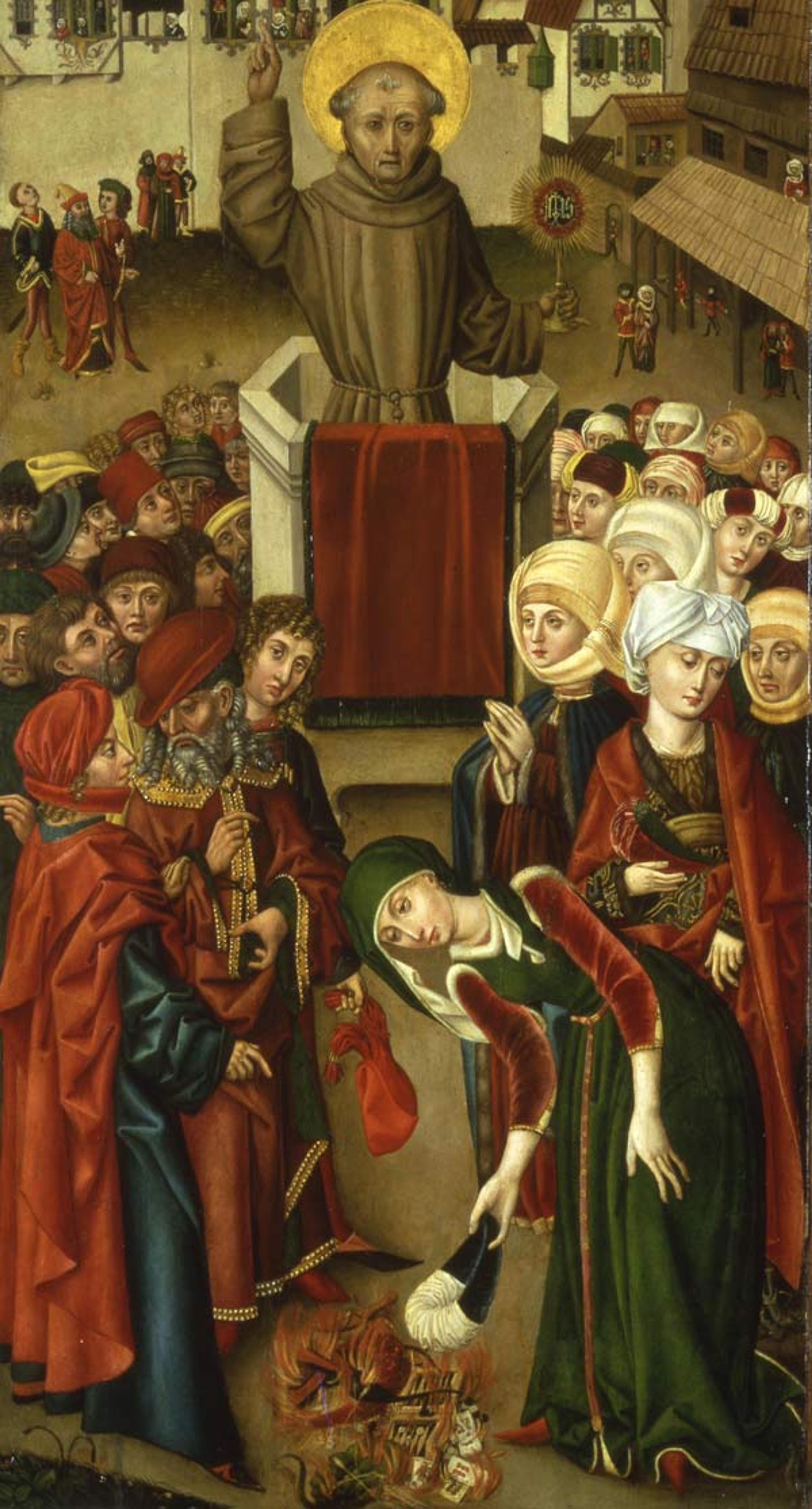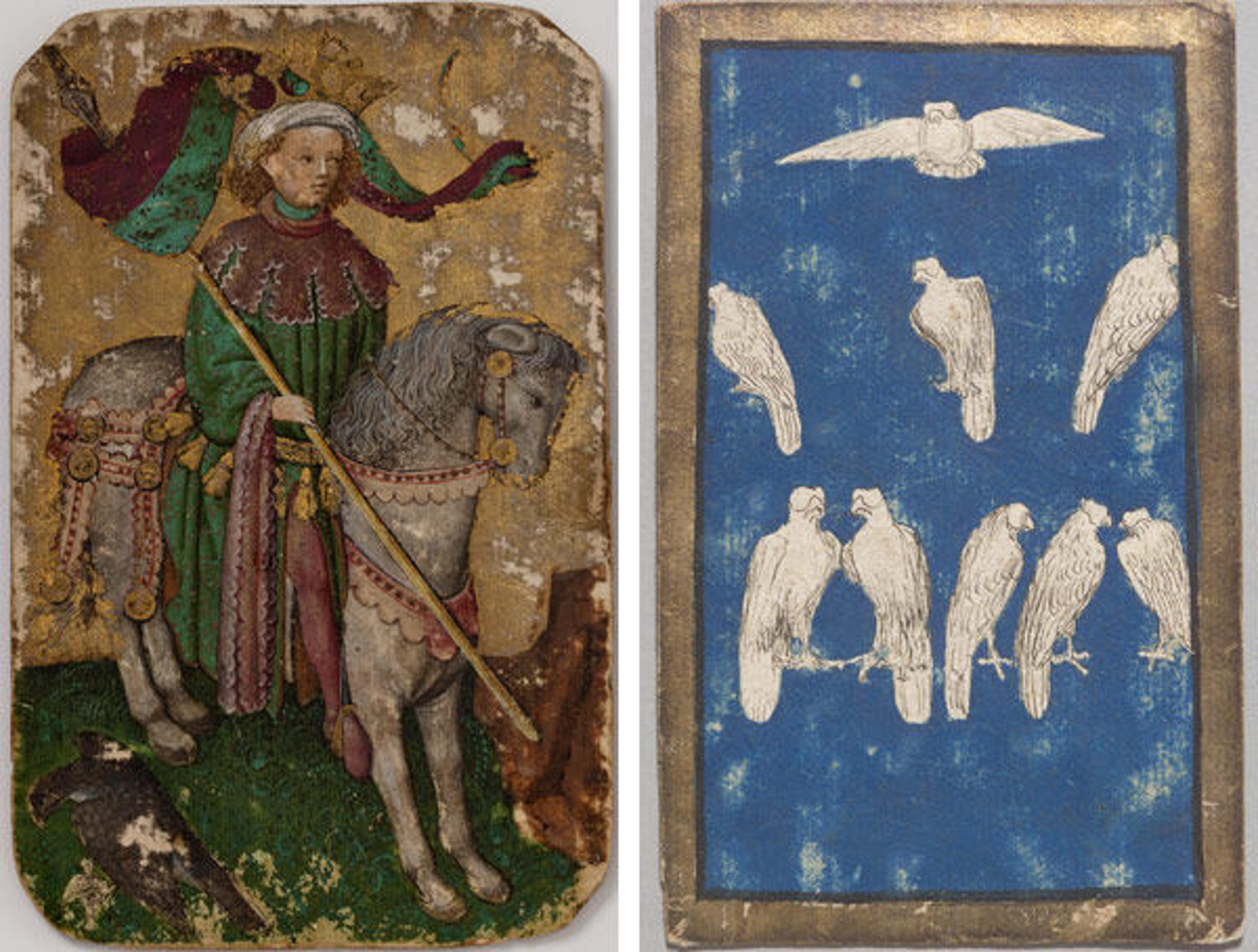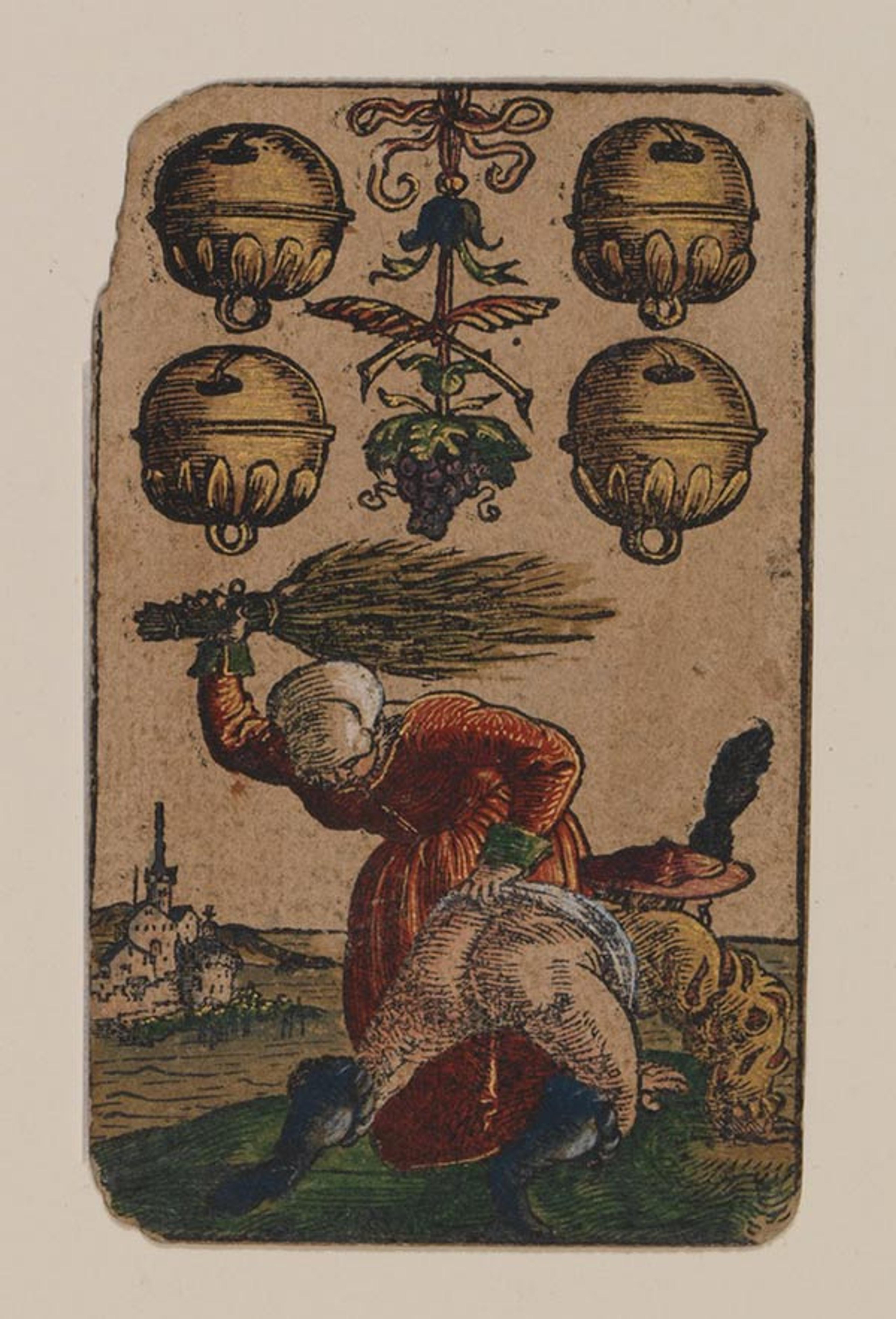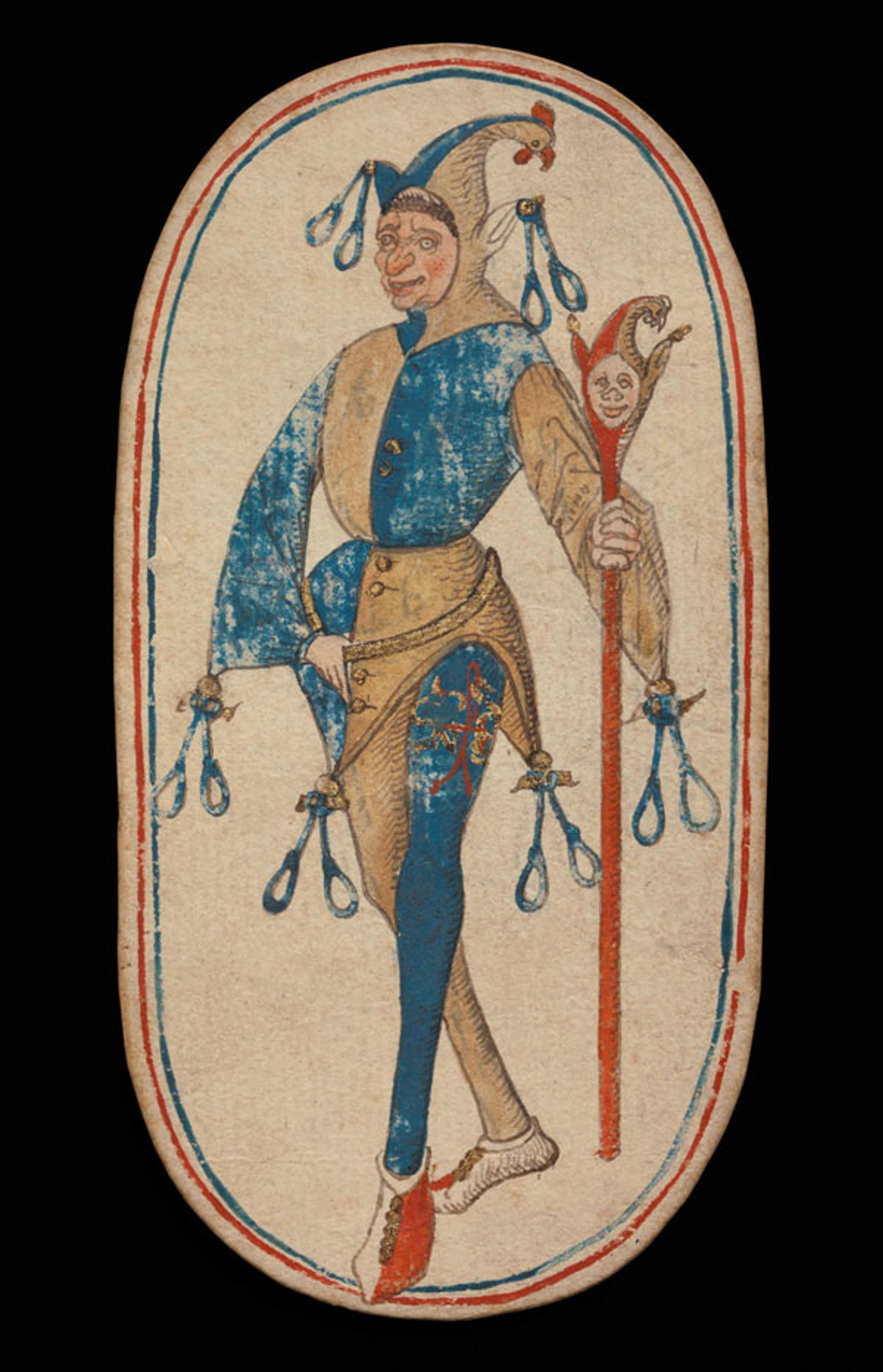
A playing card featuring the Knave of Nooses. Knave of Nooses, from The Cloisters Playing Cards, ca. 1475–80. Made in Burgundian territories. South Netherlandish. Paper (four layers of pasteboard) with pen and ink, opaque paint, glazes, and applied silver and gold; 5 3/16 x 2 3/4 in. (13.2 x 7 cm). The Metropolitan Museum of Art, New York, The Cloisters Collection, 1983 (1983.515.42)
«The Cloisters Playing Cards, one of which is illustrated above, are the focus of the small but exciting exhibition The World in Play: Luxury Cards, 1430–1540 (January 20–April 17, 2016). Alongside them are examples from the only other hand-painted decks of cards to have survived from the late Middle Ages, together with playing cards from the earliest engraved and luxury woodblock decks. This blog series on In Season will explore the history and uses of the rare medieval playing cards in the exhibition.»
Playing cards were introduced to Europe around the middle of the fourteenth century, probably to Venice from the Middle East. Card games were enjoyed by all social and economic strata, unlike chess, which was primarily associated with the aristocracy. This was not considered a good thing by civic and church authorities. The earliest references to playing cards condemn or ban them. At the very least, playing cards were denounced as an idle pastime, and at worst, when associated with gambling, it was perceived as an animator of avarice and a portal to poverty.

Anonymous Master. Saint John of Capistrano Exhorts his Adherents to Burn Cards and Gaming Boards in the Cathedral Square of Bamberg (detail), 1470–74. German. Bamberg. Oil on panel. Historisches Museum, Bamberg
The five decks of cards at the center of the exhibition are not ordinary playing cards; in fact, it is highly unlikely that any of these luxury cards were intended for play. They were more likely collectors' items, commissioned by nobility, patricians, and wealthy merchants and created by gifted artists or workshops.
Most of the playing cards in the exhibition originated in German-speaking lands, particularly in southern and southwestern Germany (Franconia and Swabia) or in the Upper Rhineland and Switzerland. Inventive and evocative, their imagery ranges from the romanticized to the coarse and even repugnant.

Left: King of Falcons, from The Stuttgart Playing Cards, ca. 1430. Made in Upper Rhineland, Germany. Paper (six layers in pasteboard) with gold ground and opaque paint over pen and ink; 7 1/2 x 4 3/4 in. (19.1 x 12.1 cm). Landesmuseum Württemberg, Stuttgart (KK grau 52). Right: Workshop of Konrad Witz (active 1434–44). 9 of Falcons, from The Courtly Hunt Cards, ca. 1440–45. German, Upper Rhineland. Kunsthistorisches Museum Wien
These five decks were created during the period from about 1430 to about 1540. Each deck reflects a differing worldview, slowly but inexorably shifting from nostalgic and idealized visions of a chivalric past to an unvarnished and biting assessment of early Renaissance society.

The Four of Bells features a man on all fours receiving a thrashing on his bared behind with a faggot, or bundle of sticks, wielded by his wife. Peter Flötner (German, 1485–1546). The Playing Cards of Peter Flötner: Suit of Bells (detail), ca. 1540. Made in Nuremberg, Germany. Woodcut on paper with watercolor, opaque paint, and gold; the d'Este arms are hand drawn in pen and ink on the 2 of every suit; each card: 4 1/8 x 2 3/8 in. (10.5 x 5.9 cm). Germanisches Nationalmuseum, Nuremberg (GMN Sp 7418 1–47 Kapsel 516)
Collectively, they chart Europe's transitional period from the end of the Middle Ages into the Renaissance, which was a time of great social, economic, and religious change. The artists who created these cards transformed a simple, ephemeral form thought to be morally corrupting into enduring works of art that reflect diverse views of a world in play.
These cards have never been brought together before and will only be shown at The Cloisters, so this is your chance to view them in person! Stay tuned for the next post in the series in which we will discuss suits and deck structures.
